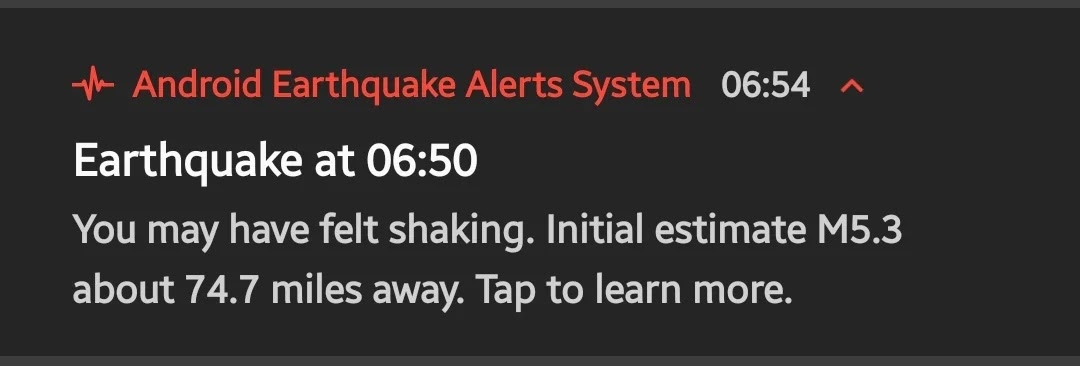Here’s how it works: When an earthquake occurs, it sends softer seismic waves, known as P waves, through the ground. Not everyone in the earthquake’s area will feel these, but a network of 1,300 USGS sensors do. When four sensors are simultaneously triggered, they send an alert to a data processing center. If that data meets the right criteria, the ShakeAlert system determines that stronger S waves, the kind that can cause damage and hurt people, could be on the way. It’s then that warning systems, like Google’s, an app called MyShake, or government agencies like the Federal Emergency Management Agency and transit systems, will interpret the data and send out alerts.
Google has also turned individual phones into miniature earthquake sensors. All smartphones have accelerometers that can pick up signals of an earthquake. If triggered, the phone sends the message to a detection server, along with rough location data, like the city a device is in. The server then pieces together where the earthquake is happening from data collected on multiple phones and beams out the relevant alerts.
Stogaitis says phones only pick up the waves when plugged in and locked. That helps to avoid confusion from phones jostling around in bags and pockets. The long-term goal is to send signals with even more speed.
Amanda HooverWe’re looking at trying to make the time from which [an earthquake begins] and the time that we detect it and send an alert as fast as possible, says Stogaitis.
Coincidentally there was an earthquake in Romania in the early hours of the morning today. I don’t usually sense earthquakes when I’m sound asleep, but this time I woke up despite its small magnitude. To my surprise, a push notification from Google was waiting for me on the phone and it reminded me of this article from a couple of days ago.

Since I was already wide awake I explored the related information a bit more and even provided feedback on the notification. I now slightly regret my reply that I had received the alert after feeling the shaking – I have no way of being certain, since my phone was on mute, as I set it each night before I go to sleep; I wouldn’t have heard an alarm even if it arrived before the seismic waves. Nevertheless a cool piece of crowdsourced technology, a reminder how the smartphone with its ubiquitous sensors has changed our lives in multiple ways that people could not have anticipated. I’m not sure how impactful it would be to receive a warning mere seconds before a serious earthquake, but I hope I never get to experience it firsthand…

The alert is integrated into Google Play services, making it available on a wide range of Android device regardless of OS version. I still have a Samsung Galaxy S8 which hasn’t received OS updates in months, if not longer, and I still got the warning. There’s even a dedicated section in Notification settings for it, under ‘Google Play services’, then ‘Personal Safety’; here you can disable these alerts or change their notification sounds and other options.
It’s a bit annoying that the distance to the epicenter is shown in miles, despite the fact that I’m outside the US – on top of that, I can’t seem to find any way to switch to the metric system, as in weather apps. Obviously this system will be accessed far less often than a weather app, but I imagine it should be trivial for a company the size of Google to apply a geolocation filter and select the proper measurement system in the area – after all, only a handful of countries use Imperial on a regular basis.
Post a Comment